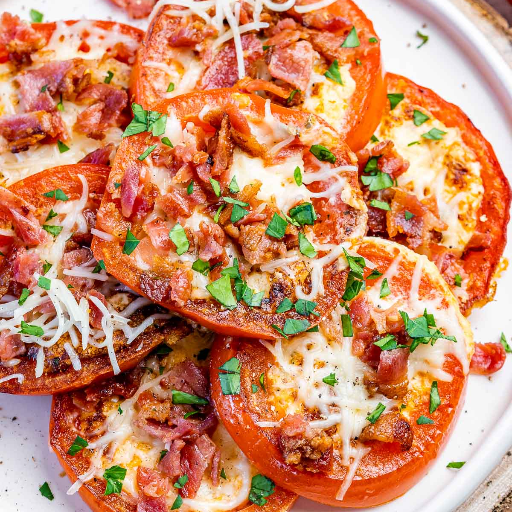Italian traditions are full of history and refined flavors and each part of Italy has its unique methods and ingredients to make the cuisines. The focus of this blog is to take the readers through some of the most famous and delightful Italian food, the main course. From the experienced chefs and those exploring the pantry for ideas, all will find this article worthwhile as it will trace the history of these foods, the typical component of each, and the way of making them to provide the relationship with Italy’s cuisine that they will not forget. From pasta to meat and fish dishes, all the bases of Italian cooking, which already has admirers all over the planet, you will explore here.
What Makes Italian Pasta a Main Course Highlight?

Classic Italian Pasta Recipes That Are Worth a Try
The diversity, genuineness, and quality of ingredients Italian pasta provides make its exceptional. For example, Italian pasta dishes such as spaghetti carbonara, lasagna, or fettuccine alfredo are mouth-watering; they combine fresh and delicate ingredients like juicy tomatoes, handmade cheese, and fragrant herbs. Each one is part of the culinary culture of Italy, each dish with distinct flavor and texture that is both delicious and comforting. These dishes are elevated to main course with the skill of making the pasta itself, as well as the special sauces of each region, making them a unique and unforgettable aspect of Italian cuisine.
The Essential Guide to Sauces That Will Help to Enhance Your Pasta Dish
In terms of sauce pairings, the general rule of thumb is that the thicker the sauce, the wider the noodle must be. The most common thinner pasta dish can be associated with spaghetti and light sauces such as aglio e olio or marinara. For thicker pastas, duo’s with rich robust cylinders such as fettuccine or pappardelle can be used, and these are prone to thick creams that accompany it like alfredo or bolognese. We also have to take into account what type of sauce will fit better; if you have thin pasta, it makes sense to use thin olive oil and delicate herbs, while for thicker pastas, it is more appropriate to have beef or mushroom sauces. This cheese to sauce ratio creates a perfect meal that is easy to enjoy.
Pasta as an Italian Feature in the Main Course of a Meal
The primary reason pasta is so important in Italian dishes is its versatility; it can be adapted to many different flavours and ingredients. Pasta is both a delicious and filling main dish whilst also allowing the local regional ingredients and custom to take center stage. Adding different sauces and garnishes to pasta reflects the creativity and history of Italian culinary art, making it one of the key elements in the cuisine of Italians that can be personalized for every occasion.
How to Perfect the Art of Italian Meatball Dishes?

How to Make Real Italian Meatballs
0While making Italian meatballs, let the perfection lies in the quality of the ingredient used and their proportions. A blend of beef, pork and veal is suggested in order to get balanced flavor and tenderness. Use fresh bread crumbs which were first soaked in milk as this helps the dish to maintain its moistness. Heavily flavor the mixture with garlic, parmesan cheese, parsley, and nutmeg too. Use salt and pepper and rub the fingertips into the mixture so that it combines without toughening the meat. Prepare and cook the meatballs in marinara sauce which will use the meatballs to enhance the taste of the dish.
Spaghetti and Meatballs with Tomato Sauce
The pairing of meatballs, spaghetti, and tomato sauce is ideal for n Italian American immigrant who is always hungry. To make classical food, everything starts with preparing tomato sauce: you need to take a gentle simmer and add basil and oregano. Let the meatballs soak the glory of your sauce. For the spaghetti pasta, allow it to cook till ‘al dente’ and mix some of the sauce in the spaghetti. This would make a huge difference in the end result of the food. Place the meat balls on top of the spaghetti and use grated parmesan and freshly cut basil leaves for the overall greater looks of the dish. This is quite fulfilling as well because of its simplicity and the Italian flavour it packs in.
Innovative Twists on Traditional Meatball Recipes
To add a modern flair to traditional meatball recipes, experiment with diverse ingredients and flavors. Consider incorporating international spices such as cumin, coriander, or turmeric for a global twist. Substitute meats like turkey or chicken for a leaner option, or even try plant-based alternatives for a vegetarian version. Integrate unique fillings such as mozzarella cheese or sun-dried tomatoes for added surprise and flavor. Serve these inventive meatballs with unconventional accompaniments, like zoodles or quinoa, to create a fresh and intriguing take on a classic dish.
What are the Best Italian Sausage Recipes?

Making Tasty Italian Sausage Dishes
The secret of the best Italian sausage recipes lies in the fact that fewer ingredients are used. An illustrative example is cutting sausage and peppers; simply slice some sausage and red and green bell peppers, onions and garlic, fry them, and add a little wine for the example. An Italian sausage with pasta is another crowd-pleaser; simply cook the sausages and break them into a creamy tomato sauce that you pour over pasta of your choice. A thick Italian sausage could also be added to an ordinary minestrone or lentil soup but at the slicing stage. These recipes in this case all focus on the unique qualities of the Italian sausage as well as the fragrant and tasteful attributes that it is able to bring to various meals.
Pasta and Vegetable with Sausage
With zucchini, broccoli, or spinach, you can combine the Italian sausage for a nutritious and balanced meal. These vegetables enhance the taste of the sausage and give a lovely color to the meal. When combining sausage with pasta, use penne or orecchiette which match the taste well. A nice combination of olive oil and garlic sauce, or even a little bit of parmesan cream, can be self with the vegetables and the dish is pleasing and delicious with all the components.
Investigation of Regional Particularities of the Italian Sausage
Sausage recipes celebrate different regions and cultures with a variety of spices and flavors. There is a cultural component in the Italian cuisine which incorporates simplicity such as sausage and peppers, or richness such as sausage pasta which require exquisite recipes. Associating sausage with vegetables such as zucchini or broccoli, or utilizing them in classic dishes such as minestrone soup showcases their versatility. What’s even better is that the leading Italian sausage recipes do not limit themselves to the original ways of cooking and are able to modify and enhance the taste of the dish.
How to Cook Authentic Chicken Cacciatore and Chicken Piccata?

Procedure for Making Chicken Cacciatore
When preparing the traditional Chicken Cacciatore, the very first step is to season pieces of chicken with salt and pepper. Once that is done, heat oil in a skillet and brown the chicken after which it can be set aside. Now Start with onions, garlic, bell peppers, and mushrooms in the same skillet, and fry until they have become soft and translucent. Add in chopped tomatoes and the chicken broth, a few sprigs of herbs such as rosemary and thyme, and a small amount of red wine. Put the chicken back in the skillet, cover it, and let to braise until the chicken is moist and done through. Season where required; serve with crusty bread or pasta to have the real ‘Italian’ touch.
Creating the sauce for Chicken Piccata and how to get it right
The first step in preparing the sauce for the perfect Chicken Piccata is to deglaze the pan with white wine after the chicken has been cooked. Next, add some lemon juice, capers, and chicken broth and bring to a simmer allowing it to reduce and thicken slightly. To finish, lightly whisk in butter into the sauce and add salt and pepper to taste. Then drizzle the sauce over the chicken and, if desired, decorate with a sprig of parsley which makes the dish more inviting.
Tips for Presenting Chicken Cacciatore and Chicken Piccata
While serving Chicken Cacciatore, offer polenta or pasta on the side to soak up the sauce, and finish with a plain green salad. Chicken Piccata may also require stuffing, in which case, mustard cream potatoes or a light quinoa salad may be used to enhance the dish’s tart taste. Sprinkling both dishes with parsley and basil, along with a drizzle of oil, not only decorates the plate but also gives off a rich smell.
What are the Key Ingredients for a Perfect Risotto?

Recognizing the Fundamentals of The Italian Risotto
A good risotto is founded on high quality Arborio or Carnaroli rice which is known for its ability to soak in an extreme amount of liquid without losing its creamy texture. Basic components are finely minced onions, dry white wine, chicken stock or vegetables. To achieve rich flavors in the risotto and to make it creamy, the dish requires freshly grinned parmesan cheese and butter. A little amount of olive oil is added to the mixture to deepen the flavor components. Finally, the risotto is augmented with salt and garnished with herbs like parsley or basil to develop its speck of aromatics.
How to Obtain Creamy Texture in Risotto
The secret to a truly creamy risotto is the steady addition of warm stock and continuous agitation of the rice. This technique on stir-frying the rice allows the starch grain of rice to be released into the liquid, imparting a creamy texture. Prepare to add the stock no more than one ladle at a time so the rice has time to soak some of it. Moreover, complete the process with some which will contribute some more creaminess to the dish.
Playing Around with Ingredients when Making the Italian Risotto
When playing around with ingredients in Italian risotto recipes, it’s always good practice to add new components that stand to amplify the dish. Consider adding coulis or terrines to provide body and texture, and saffron to add richness in color. Shrimp or scallops may lend a more oceanic feel, while lemon or truffles add a delicate touch. Utilizing such components along with the primary constituents of the dish such as rice, stock or cheese reveals new possibilities without compromising on the core palpability characteristics of the dish which is creaminess.
Reference sources
-
Food & Wine – 36 Irresistible Italian Main Dishes
-
AllRecipes – Italian Main Dish Recipes
-
Gino D’Acampo – Italian Main Course Recipes
Frequently Asked Questions (FAQs)
Q: If I want to get a feel for authentic Italian cuisine, what dishes would recommend?
A: To the ones who want to get a taste of Italy, I would recommend trying their real main courses such as Lasagna, chicken saltimbocca, cacio e pepe, and osso buco. Such dishes are highly regarded in Italy and are a degustative delight.
Q: Is there a special way to prepare the lasanga which is found in Italy?
A: The Italian lasagna consists of layers of different vegetables or meats, Ragu sauce, Béchamel sauce, and a lot of cheese such as Mozarella and Parmesan. This dish can then be placed in the oven to create a golden-brown light crispy texture, with a bubbling sound to it.
Q: Would you tell us something more about chicken saltimbocca, how is it built?
A: Layered chicken breasts are saltimbocca – a thin slice of chicken shallow fried with one layer of prosciutto and sage that is pan cooked in a white wine sauce. It is a chic little dish that delivers many tastes in one and is great for impressing guests.
Q: Is there a vegetarian option an Italian dish which you would recommend?
A: A great meat-free option would be Eggplant Parmesan where the slices of eggplant are first breaded and then fried. It’s then combined and layered with tomato sauce and cheese and placed in an oven to bake. One other option is ricotta and spinach ravioli with light curry or butter sauce.
Q: What is polpettone, how is it distinct from ordinary meatloaf?
A: Polpettone as mentioned is the Italian meatloaf, which is often stuffed with hard boiled eggs, spinach or cheese. It is considered to be a rather rustic meal which can be served warm or cold, fitting for quite an Italian dinner.
Q: How to cook a steak Florentine?
A: Steak Florentine, or ‘bistecca alla fiorentina’, comes on T-bone steaks, thickly cut, seasoned with only salt and pepper and grilled on high flame for a wonderful and succulent crust. It is served pleasantly rare to medium.
Q: How would you describe cacio e pepe and what abridges it as a pasta dish?
A: Cacio e pepe is a remarkable simple dish only consisting of pasta, pecorino cheese and black pepper. The unusual combination of congealed cheese and pepper sauce clings on the pasta so finely as it is mixed with crushed pecorino and water and the cooked pasta.
Q: Differentiate Ravioli from Tortellini.
A: Both Ravioli and Tortellini would fall under the stuffed pasta category, only that ravioli are most of the time, rectangular or round, flat shaped and filled whilst tortellini is in the shape of a ring and has thicker stuffing. Both are mouthwatering offering Italian main courses.
Q: What distinguishes a classic Italian frittata from an omelet?
A: A frittata is not flipped over in a pan as an omelet – it is first prepared on the stovetop low and then put under the broiler or oven. It is often filled with vegetables, meat, and cheese, and cut in slices; thus it is a satisfying meal in its own right, A main course dish in Italian cuisine.
Q: How important is Pancetta for Italian cuisine?
A: Pancetta renders delicious, savory elements when used in various preparations. It is extensively used in pasta sauces, carbonara, casseroles, or sprinkled on salads and other accompaniments, all of which add flavor.









